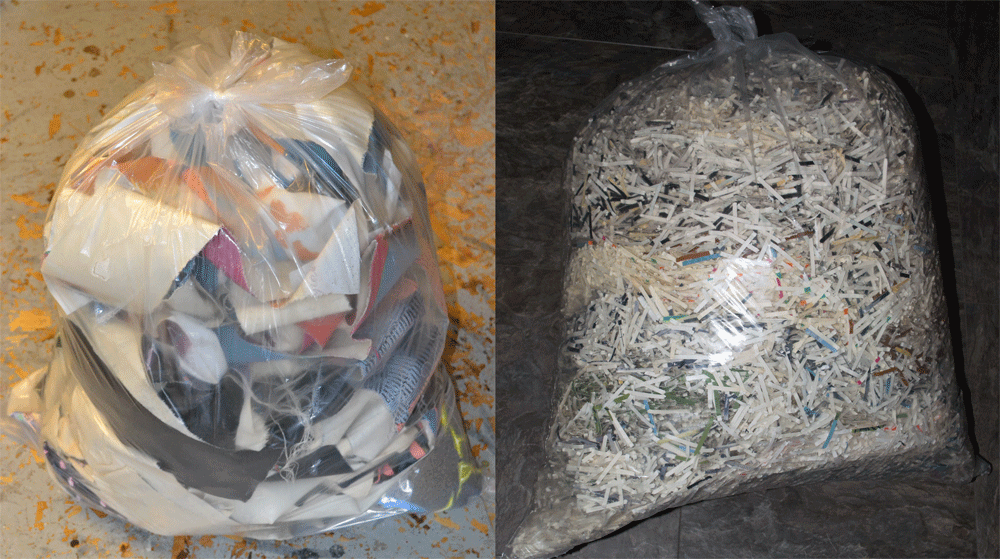and another thing
Over time and between exhibitions, much of the work illustrated in this archive was stored in an attic, a basement or a spare bedrooms. Such is art making when the primary aim is to expose ideas rather than promote sales. 2015 saw a need to downsize the family home - a task that can be particularly daunting. But, as it turns out, there is an upside to downsizing. Indeed, in many ways it is genuinely cathartic. Moving from a house / studio / workshop to an apartment encourages a long hard look at all forms of stored work. In this case, the final step was to cull, shred, rip, bag and then say 'goodbye' at the kerb to much of what may often be euphemistically referred to as the collection of the artist.
art-in-a-bag: a fifty year summation. In the finest traditions of conceptual and performance art, this ostensibly new work was installed at the roadside on Grimes Avenue (28/09/15). But, the installation and its move from kerb to garbage truck went unrecorded as did the identity of the participants. This put me in mind of sculptor/printmaker McCleary Drope who, in the early 1970s, travelled to pre-selected map coordinates where he looked at the scene but did not record it beyond his own memory of the moment. The lack of a record notwithstanding, September 28th may have been one of the more inciteful/insightful conceptual events in my career. In terms of space and time, the event summarised and vicariously spanned activity that ranged across two countries, two provinces and fifteen home-based studios.
documentation
A further development of downsizing, was my reintroduction to a myriad documents that lurked in drawers, binders, and miscellaneous nooks and crannies. They included exhibition announcements, catalogues and newspaper articles. Scanning, shredding and recycling these documents was a significant step in downsizing. Posting the digitized files to this website provided a structure around which to create an archive.
Finally, I should acknowledge that it was particularly rewarding to rediscover records of when and where my work showed alongside that of my talented wife and partner of over fifty years, Gillian (Jill Clarke) Maycock.

